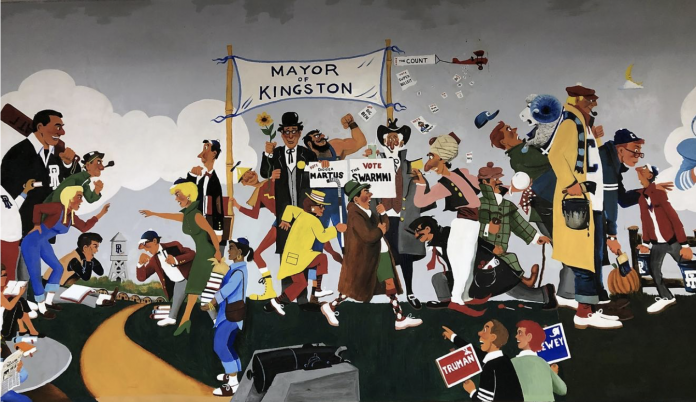The University of Rhode Island recently announced plans to remove a mural painted nearly 70 years ago. Student veterans created the Memorial Union back in 1954 at the University of Rhode Island to honor the military service of students and those who lost their lives in the war.
Kathy Collins, vice president of student affairs, shared that many students filed complaints on the folk-art mural. They said it portrayed a very homogeneous population and that there were “too many white people.” Students didn’t feel comfortable sitting in the space.
The university announced its plans to cover up and replace the mural before classes start.
“I think we have to recognize the horrible incidents [involving] George Floyd, Breonna Taylor, and most recently Jacob Blake in Kenosha, Wisconsin, during this … heightened time, and we as an institution have to look at the systems in place across this institution that maybe are not representing who we are today and representing the true diversity of URI today,” Collins said.
World War II veteran and University alumni, Arthur Sherman, was the man who painted the mural. The 95-year-old artist was asked to draw cartoon-like murals in a Quonset hut that served as an earlier site for the student union.
“Oh, I loved painting that, yeah. I never had any formal education in painting by the way I just used to cartoon,” Sherman said about the mural. He talked about different parts of the mural that depicted the era. Students piled into cars in letter sweaters, class reunions, a beach scene, etc.
Sherman shared that “times goes by and things change” when asked about the removal of his mural. His daughter, Pamela Sherman, doesn’t agree.
“It’s terribly upsetting and we grew up with those murals being there. It’s an opportunity for the University of Rhode Island to embrace its history, it’s an opportunity for it to show a timeline, a progression, and a change over decades and we never want to forget our past,” Sherman said.
The painter’s daughter suggested putting new artwork alongside the pieces of history as a timeline of the evolution of the campus. She suggested the perspective should be to look at history and maintain the timeline. Not destroying it.
“Wouldn’t it be a mistake if we look back 100 years from now and say, ‘Isn’t it a tragedy that we lost this artwork? It’s like any work of art, especially a painting — seeing a picture of it is just no comparison to seeing it live,” Sherman asked.


